Estimated reading time: 11 minutes
Most homesteads are surrounded by an abundance of trees growing in the wild. This is great for firewood and shade, but selectively planting certain trees can offer other benefits.
These include fruit trees and certain trees that provide natural, medicinal benefits. The win/win is when a tree can satisfy all needs: firewood, shade, nutrition, and medicine.
Here are some trees to consider planting that offer the greatest variety of benefits. We’ll cover the specifics of each in terms of value on multiple levels:
- Apple trees (3 varieties)
- Cherry trees
- Pear trees
- Oak trees
- Mulberry trees
- Ginko
- White Willow
Want to save this post for later? Click Here to Pin It On Pinterest!
Tree Planting 101
You can buy trees in a variety of sizes from a nursery, or you can do like our pioneer ancestors did and start them from the seeds. An obvious general rule is that the larger the tree you plant, the sooner you’ll reap the benefits.
Plant Two of Each
Planting two of each tree variety in relatively close proximity will ensure pollination. If you plant one pear tree and the next closest pear tree is 30 miles away, you probably won’t see much fruit.
Protect the Trunk and Base of Newly Planted Trees
There are some animals in winter that will strip the bark of a young tree and effectively kill it. Deer are notorious for gathering around a sapling and tearing the bark from base to branches. Field mice and voles can do the same at the base of a tree. When the bark has been stripped around the circumference of a tree’s trunk, the tree will die. This is referred to as “girdling.”
There are a couple of approaches you can take to prevent this. One is to protect the trunk from the base to the branches with a rolled circle of chicken wire about 6 to 8 inches in diameter. This can be enough to repel deer, but mice and voles can still find their way past it.
The other option is a hot pepper combination that is either sprayed or painted on the bark. A standard recipe is a bottle of the hottest hot sauce you can find plus cayenne pepper or some blended Scotch Bonnet Habaneros pureed with vinegar and oil. Animals may still take a taste, but one taste is usually enough to send them off in search of friendlier food.
It’s also good to generally cluster your fruit trees in the same area. Many fruit trees bear fruit at the same time and having them relatively close together makes harvesting easier.
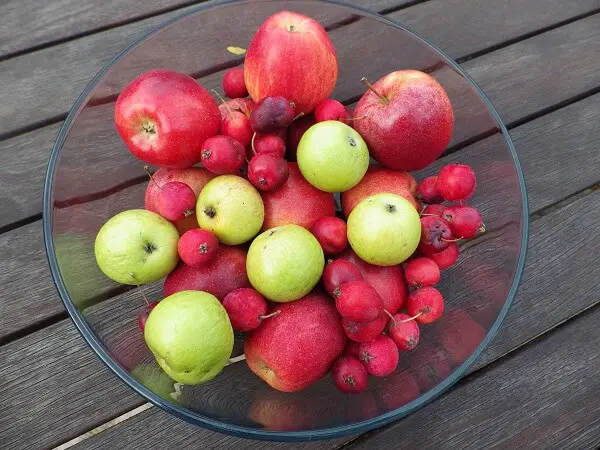
Consider the Possibilities
Here are just a few ways that trees can provide value to a self-reliant lifestyle:
• Fruit in hand for snacking and meals. Many fruits like apples are ranked very high on a nutrition scale and offer medicinal benefits. We all remember “An apple a day keeps the doctor away.”
• Fruit pies, pastries, and other baked items provide a good source of healthy calories and still deliver their nutritional value.
• Fruit juices like apple cider, cherry juice, etc. There have been many studies done that show the significant, anti-inflammatory value of cherry juice for treating conditions like arthritis and gout.
• Vinegars made from fruit like cider vinegar. Books have been written about the value of apple cider vinegar. It’s a powerful, natural antiseptic; an invaluable ingredient for food preservation in canning and pickling, has numerous medicinal properties for treating skin conditions, indigestion, inflammation and the list goes on and on.
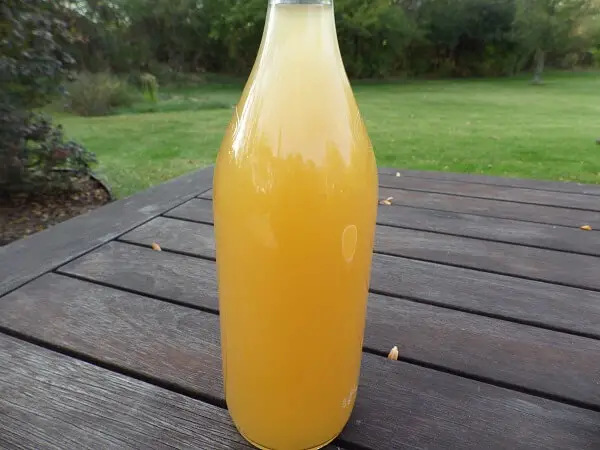
• Jams, jellies, and preserves are another way to preserve the natural nutrition and medicinal value of fruits for long-term use.
• Sauces and syrups like applesauce, cherry and mulberry syrup and other variations like apple butter also brought diversity and preservation techniques to fruits from trees.
• The wood of many trees is prized for smoking fish, game, and other foods due to the light, sweet smoke they bring to the smoking process.
• Fruits add diversity to a diet in addition to vegetables from the garden and proteins from farm animals or from hunting and fishing.
• Fruits are high in fiber to aid digestion and regularity.
• Fruits are enjoyed by all ages and can accompany meals at all times of the day.
• There are also medicinal properties in the bark of many trees with the inner bark or xylem of the white willow topping the list. White willow xylem contains a compound known as “Salacin.” Salacin is the active ingredient in aspirin and an infusion of white willow bark is just as effective as a pain reliever as aspirin in tablet form.
• Fruit from any fruit tree can add to a farm animal's diet, especially pigs and rabbits.
• Acorns from oak trees have significant nutritional value including calories from fat, a high-calorie count, and can be either eaten by hand or ground into flour.
• Firewood will eventually be provided by any tree as its branches or the tree itself dies off.
With all of that in mind, here are some trees to consider for your grove or homestead orchard.
1. Black Walnut Tree
The black walnut tree is a must for homesteaders, especially if you're looking for multipurpose trees. The nuts are not only delicious but are also packed with nutrients. They can be eaten straight from the shell, baked into pies or bread, or used in various culinary delights.
Furthermore, the shells, when crushed, are fantastic for natural cleaning and scrubbing. Even more, the wood of a black walnut tree is dense and fine-grained, making it highly valuable for crafting furniture or artistic wood pieces.
2. Burr Oak Tree
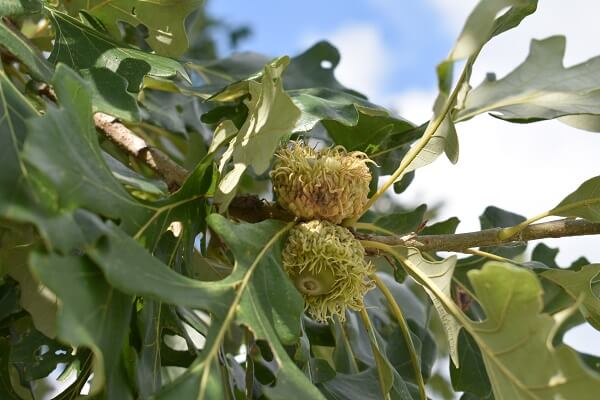
It’s quite possible you may have some oak trees growing already, but the Burr oak produces an acorn that is naturally sweet and not as bitter as acorns from the red oak and white oak. Most acorns are high in tannic acid. These tannins impart a very bitter flavor to the acorn that must be leached out through water soaking and repeated water changes.
Burr oaks are different. The acorns have the least amount of tannins and the acorns can actually be eaten right off the tree when they first appear and after they have been shelled. They’re called Burr oaks because the acorns have a frilly growth around them that resembles burrs. They’re great when roasted and can be ground into a light and delicate flour.
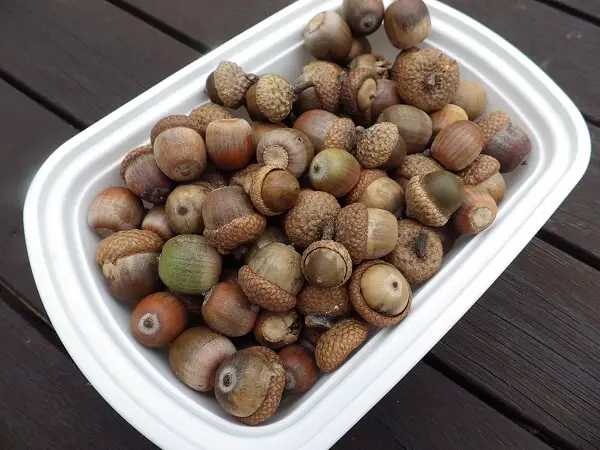
3. Cherry Tree
There are two basic varieties to consider: sour cherries and sweet cherries. Sour cherries are used in baking and for juicing, and sweet cherries are the choice for eating cherries in hand and also for juicing. You can plant both, but the two varieties will not cross-pollinate, so remember to plant at least two of each variety. Both varieties have anti-inflammatory value.
4. Elderberry Tree
Elderberries have been praised for their health benefits for centuries. They're packed with vitamins and antioxidants, making them a popular ingredient for syrups, jams, jellies, and even wines.
In addition to the edible and medicinal properties of their berries, elderberry trees are also known for their beautiful white flowers which can also be used to make delicious elderflower cordials or sodas. Plus, these trees act as a great attractor for beneficial pollinators, enhancing the biodiversity of your homestead.
5. Gingko Tree
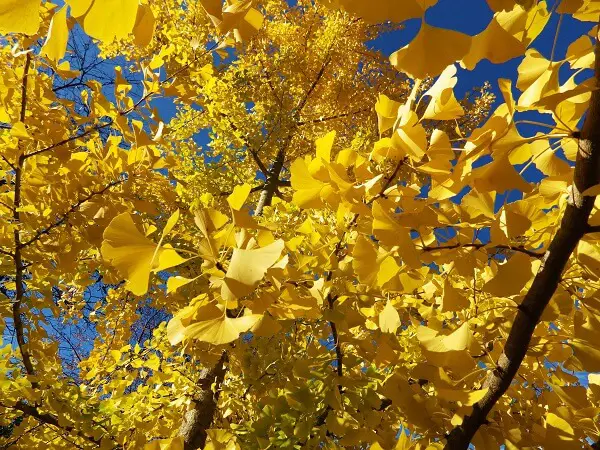
The Gingko tree is the oldest living deciduous tree on earth. It was believed extinct and only a fossil record from 400 million years ago recorded their existence. It was in the 1930s that a botanist from New York was stunned to find a Gingko tree growing in a garden in China.
He took some cuttings and every Gingko in North America today is derived from those cuttings. An infusion of Gingko leaves has proven medicinal properties for treating a range of ailments from muscle soreness to inflammation, and it can boost the immune system.
6. Golden Delicious Apple Tree
Another delicate and flavorful variety and perhaps the favorite for eating in hand. They too can also be juiced or used in baking but the firmer and juicier varieties like Macintosh and Winesap hold up better in baked goods.
7. Hazelnut Tree (Filbert Tree)
Hazelnuts are not only delicious but are also loaded with essential vitamins and minerals. Having a hazelnut tree on your homestead ensures a steady supply of these nutritious nuts.
Moreover, the tree is fairly low maintenance, tolerant of different soil types, and does well in various climate conditions. In addition to their food value, the branches of hazelnut trees are flexible and can be used for crafting, while the leaves can be added to composts for a richer mix.
8. Mcintosh Apple Tree
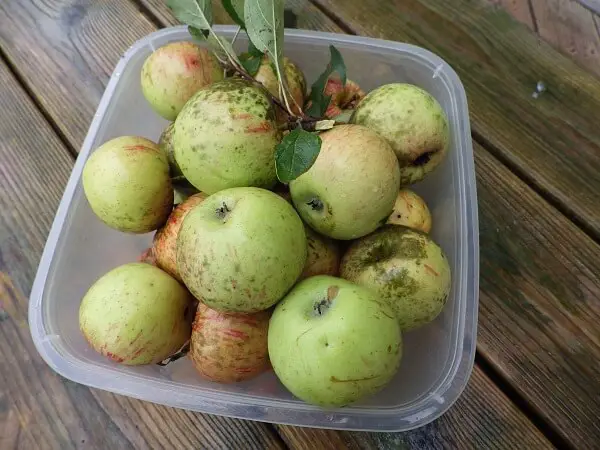
These apples are juicy, tart and make an excellent choice for making cider, cider vinegar and for baking because of their firm texture.
9. Mulberry Tree
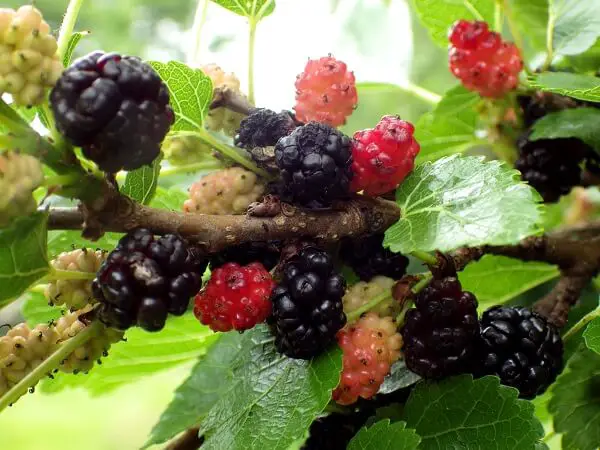
Wild berries abound — raspberries, blackberries, gooseberries, and wild strawberries — but no single plant produces more berries than a mulberry tree. They start bearing fruit early in June and continue to bear fruit into the summer.
The easiest way to harvest mulberries is to spread a tarp on the ground under the tree and shake the branches with a forked stick. You’ll get your share of leaves, stems, and bugs as well, but it’s easier to pick the ripe mulberries from a pile in the center of the tarp rather than the tree. They’re great as a topping with any cereal, they can be juiced, made into jelly or preserves, and they can even be used to dye clothing.
10. Pear Tree
Pear trees present a delicate and sweet fruit that is great to eat in hand and to use for sweet and flavorful desserts, from upside down cakes to canned pears and preserves. They’re a kid’s favorite and can be preserved a variety of ways, and they also add some diversity in terms of fruit flavors.
11. Red Delicious Apple Tree
These apples are the traditional snacking apple. They are large, have a delicate flesh and a mild flavor. Curiously, they provide less juice for their size and their delicate texture doesn’t hold up as well when baked but regardless, they can also be used for juicing or baking in a pinch.
12. White Willow Tree
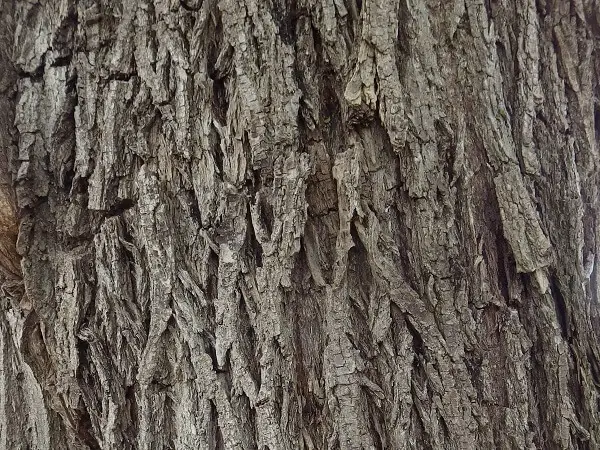
We already mentioned the pain-relieving value of willow bark, but this is also a great shade tree. They prefer moist soil and swampy areas but usually will thrive in most locations. The green wood is also extremely flexible and ancient people sometimes used willow to make bows and arrows.
13. Winesap Apple Tree
These apples are a heritage species and also provide a good amount of juice for their size and also present a firm texture for baking. They have a uniquely tart taste and, like all apples, are great in hand when eaten off the tree.
Of course, there’s more…
This list is only a suggestion for trees to consider and there are certainly others you may prefer, but the trees listed here satisfy the basic criteria of providing value nutritionally, medicinally, and practically. The sooner you get the trees in the ground, the sooner you and your family will reap the benefits for years to come.
Like this post? Don't Forget to Pin It On Pinterest!
You May Also Like:

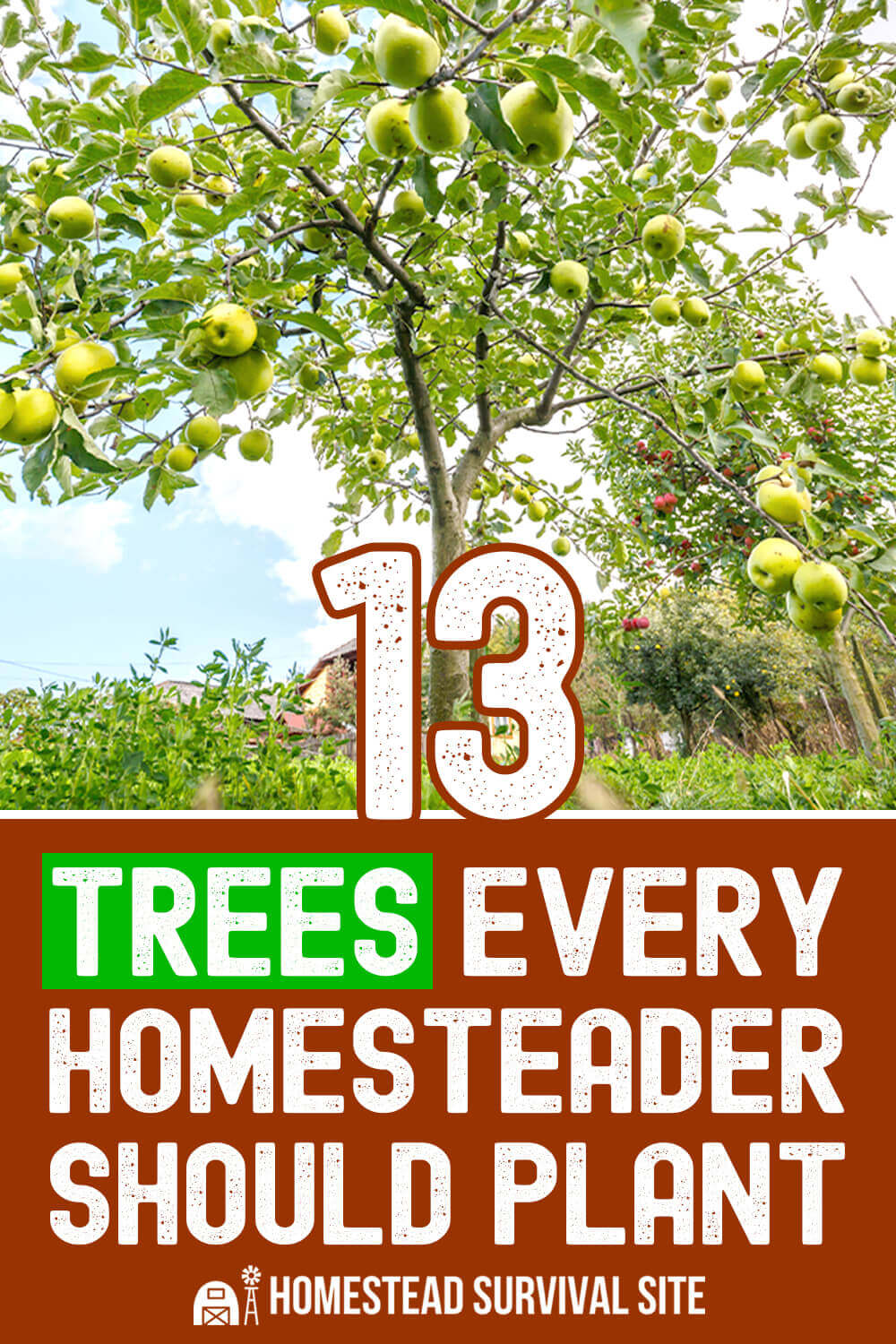






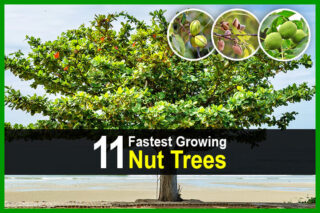




They say that it is much better to plant two or more varieties of apple trees together and two trees of each.
I HATE Red “Delicious” and Golden “Delicious” apples. They are the ones sold in every grocery store. They are mushy, not crisp, and, while they are sweet, they have very little other flavor than “sweet”. There’s Honeycrisp, and Jonathan, and many others which are far superior to those. And you mention several apple trees with pictures, but there are no pictures of the other trees.
You also forgot to mention USDA plant hardiness zones. I live in Zone 4, where we can’t grow sweet cherries; we can only grow pie (sour) cherries. Please take into consideration that there are many growing zones in the US.
I also hate Golden Delicious apples, and the Reds are good for only a very short time after ripening. I have found no better cooking apple than a Gravenstein, but they also turn soft very quickly.
My great grandmother Lynn told me the only apple you need is a Granny Smith. An old heritage cultivar. The newer breeds sold in the store are too soft.
If you have the land plant Gravensteins, Macintosh, and Granny smith. I remember her saying Granny Smith is the best baking apple. But I don’t remember what she said to do with the others. But she said every recipe imaginable can be made with one of those three apples. Including eating in hand, fermenting, and cellar storage.
Gravenstein is an applesauce apple primarily, ripens early. Mac is a great all-purpose apple, ripens in the Fall, stores pretty well. Grannies are firm and tart and hold up well for baking, but they bloom early and ripen late. They are also a great keeper and tend to sweeten a little in storage.
I agree with Susan about the zone. I cannot grow half the trees on your list as I live in the desert.
just be aware that not all trees will not do well outside of their growing zones. i live in zone 8 and apple trees just won’t live or make it here, i have tried for years. just like paw paw’s, kiwi or oranges won’t live in zones 6 or less. do your research before you spend money and time on them. best of luck all
I live in zone 5 and have 2 white and 2 black mulberry trees in my backyard that are cranking out the berries! I find the white ones are even sweeter than the black. I do exactly what the article says and put a tarp under them and then shake the limbs. Between the 4 trees I had 5 ice cream pails full of berries in one day. A couple days later, the same thing. They produce for a good month and a half and then start slowing down. They are the only berry high in iron.
Thank you for all of your hard work on the newsletter.
With regret, I think is it finally time to say good-bye to the Homestead Survival Site. Your articles, written by knowledgeable people I’m sure, continue to deliver information which is inaccurate at best and often dead wrong. Anyone reading these posts should do their own research to confirm the accuracy. As it relates to the comments, yes USDA Zones are important, but there are also desert adapted varieties which can survive and produce; look for low chilling requirements. As for two trees of the same kind, often not the solution. For example, planting two Golden Delicious may produce a minimal crop, but planting a Golden and a Red will produce bushels on both. And there are fabulous crosses and new varieties far surpassing common apples found in the grocery store. Even some heritage varieties are far superior, but in our attempt to produce new, exciting, large varieties, we’ve bred out the flavor; just look at tomatoes.
Research and check carefully the pollination requirements of all fruits before planning your orchard. Planting two of the same species usually refers to trees such as nuts that have male and female flowers on the same tree which open and slightly different times; the overlap produces more fruit. Also, in my training and research, most sweet cherries need a pollinator of a different variety, but most, if not all, sour cherries are self-fertile and will pollinate any sweet cherry. And then some species like peaches are all self-fertile, no need for more than one. Also, if you are limited on space, look for multiple-grafted trees like a three-on-one or five-on-one.
One other thing before I go, Burr Oaks produce HUGE acorns. Often the size of baseballs! Carefully consider placement of such a tree as falling acorns could be dangerous. For me, as a horticulturist of 40 years, the pure size of Burr Oak acorns is so impressive, I often forget their other attributes. Another excellent oak for sweet acorns, perhaps the sweetest depending on the source you read, is the Yellow Oak or Chinquapin Oak.